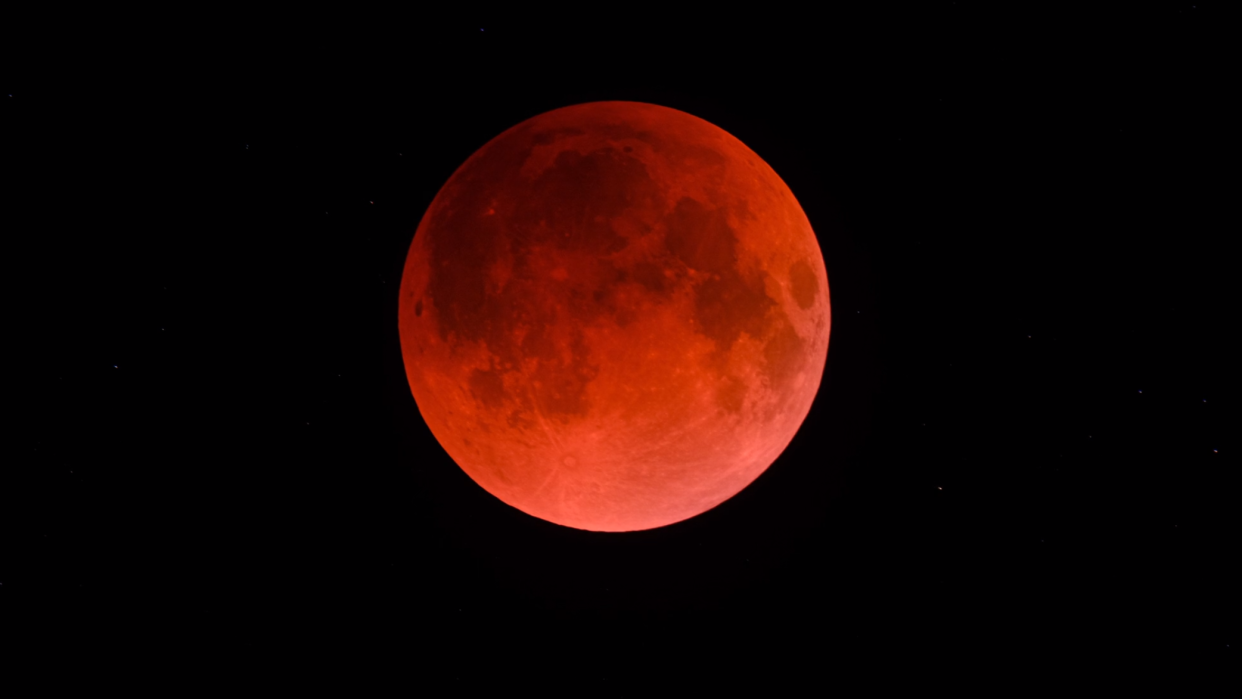See the moon turn blood red in this stunning lunar eclipse video

Miguel Claro is a professional photographer, author and science communicator based in Lisbon, Portugal, who creates spectacular images of the night sky. As a European Southern Observatory Photo Ambassador and member of The World At Night and the official astrophotographer of the Dark Sky Alqueva Reserve, he specializes in astronomical "Skyscapes" that connect both Earth and the night sky. Join Miguel here as he takes us through his video "Earth Shadow – The Beauty of a Total Lunar Eclipse in Motion."
A video time lapse in 4K shows the deep feeling experienced during the incredible moment when the moon passes through Earth's shadow. This gives the natural satellite a blood-red hue during a total lunar eclipse.
The stars around the moon become visible as the light of the moon drops drastically, giving rise to a unique moment of seeing the mesmerizing presence of the Milky Way. At the same time, the shining moon is reflecting a low reddish light from being immersed inside the umbra of the Earth's shadow.
Related: What is the moon phase today? Lunar phases 2023
Read more: How to photograph the moon using a camera: techniques, kit, and settings

TOP TELESCOPE PICK:

Looking for a telescope to see the moon? We recommend the Celestron Astro Fi 102 as the top pick in our best beginner's telescope guide.
The movie also intends to reveal the emotional feeling and ambience that surrounds us during this celestial event, when we are under the real darkness of a pristine starry sky like Mértola, in the Dark Sky Alqueva territory of Portugal.
All the images were captured during the total lunar eclipse of May 16, 2022. Because it was near the closest point to Earth during its orbit, this moon was also called a "super blood moon."
According to timeanddate.com, the next lunar eclipse will happen May 5 to 6, but it will be a penumbral lunar eclipse visible in Europe, Asia, Australia, Africa, the Pacific and Atlantic Ocean regions, the Indian Ocean and Antarctica.
Close to the end of the year, on Oct. 28 to 29, will be a partial lunar eclipse, seen from Europe, Asia, Australia, Africa, North America, much of South America, the Pacific and Atlantic oceans, the Indian Ocean, the Arctic and Antarctica. The next total lunar eclipse will be on March 14, 2025.
Want to see the moon or take great photos of it? Be sure to see our guides on the best telescopes and best binoculars that can help. Don't forget to also check out our guides on the best cameras for astrophotography and best lenses for astrophotography to get started.
To see more of Miguel Claro's work, please see his website or follow his stories on Instagram at www.instagram.com/miguel_claro .
Editor's Note: If you snap your own photos of the moon and would like to share them with Space.com’s readers, send your photo(s), comments, and your name and location to spacephotos@space.com.
Follow us @Spacedotcom, or on Facebook and Instagram.

